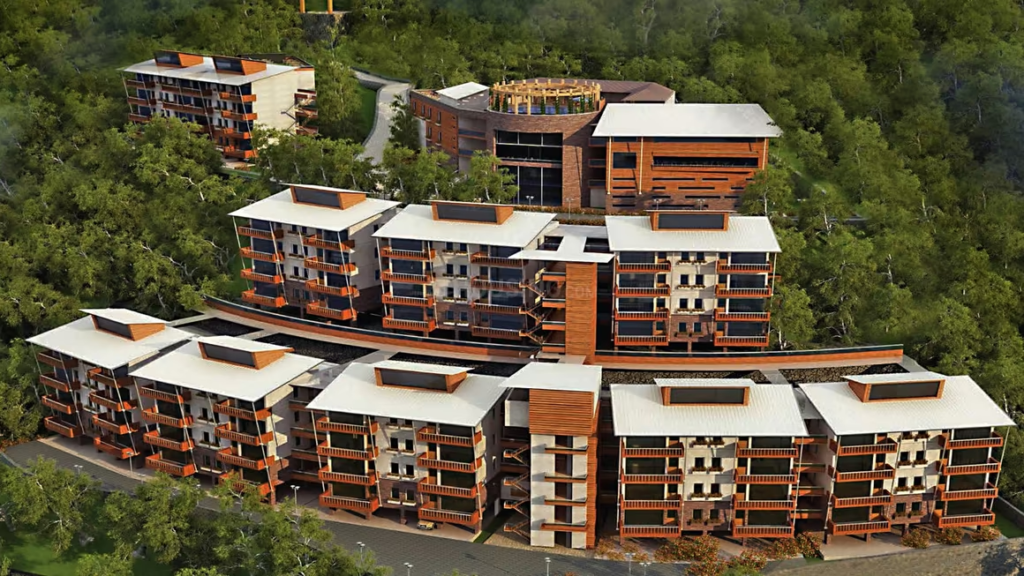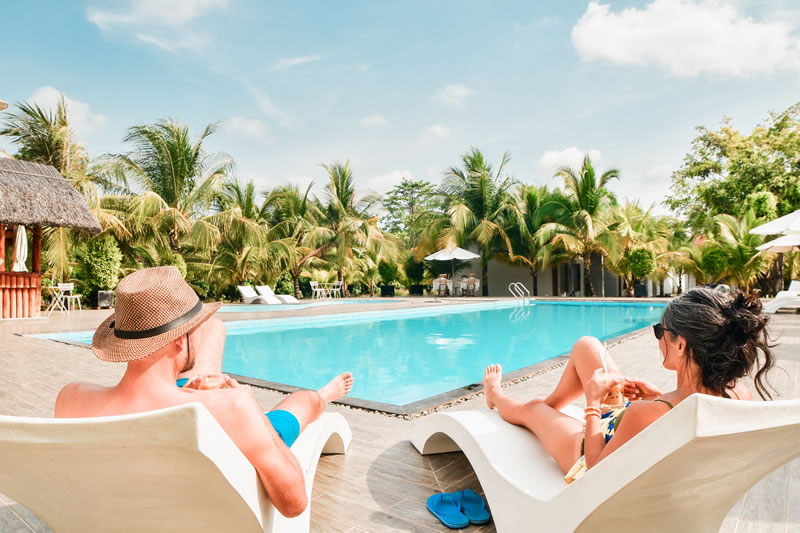Imagine retiring in a land where ancient traditions blend seamlessly with modern comforts, where stunning landscapes, vibrant cities, and affordable living await you. India, with its rich cultural heritage, diverse landscapes, and burgeoning retirement community options, offers an array of choices for those looking to spend their golden years in a fulfilling and peaceful environment. Whether you seek a peaceful retreat, a luxurious lifestyle, or a community with comprehensive healthcare, India has some attraction to offer for every retiree.
In this guide, we’ll explore seven of the top retirement destinations in India, each offering unique living experiences tailored to retirees seeking comfort, care, and enrichment in their post-career years.
Top Retirement Homes in India
India is home to numerous retirement homes and villages that provide everything from luxury living to healthcare and a sense of community. Here are seven noteworthy retirement villages that stand out:
1. Aamoksh Retirement Homes, Pune

Located on the peaceful outskirts of Pune, Aamoksh Retirement Homes offers a serene environment surrounded by lush greenery. The community emphasizes an active lifestyle, providing opportunities for various activities, including scuba diving and parasailing. The facility also offers personalized care, organic meals, fitness programs, and 24/7 medical assistance.
- Why Retire Here? Aamoksh offers a perfect blend of nature and active living. Whether you’re interested in relaxation or adventure, this community provides opportunities to engage and live a healthy life.
- Personal Note: My visit to Aamoksh left me impressed by the peaceful atmosphere and the variety of activities available. The focus on a holistic lifestyle makes it a great place for those looking to stay active in their retirement years.
2. Gagan NuLife Resort Residences, Pune
Gagan NuLife offers a luxurious, resort-style living experience, focusing on the holistic well-being of its residents. The community provides wellness retreats, steam and sauna facilities, and recreational options, including a TV room and card room. Nursing care and housekeeping services are also available, ensuring a hassle-free lifestyle.
- Why Retire Here? The blend of luxury and care makes Gagan NuLife an ideal place for retirees who want to enjoy a comfortable, worry-free lifestyle with top-notch amenities.
- Personal Note: Gagan NuLife is a true resort experience. The level of comfort and the wide range of amenities available really make it feel like a vacation home. I can see why it’s an excellent choice for retirees seeking a luxurious lifestyle.
3. The Chennai Homes, Chennai

Located in Chennai, The Chennai Homes is a premium retirement community that blends wellness and spirituality. The community offers various facilities, including a 24/7 health center, fitness gym, shuttle court, and an in-house temple. Residents can enjoy a wide range of activities, such as movie nights, yoga, wellness workshops, and temple tours, which foster a sense of community.
- Why Retire Here? The Chennai Homes offers a balanced lifestyle, providing modern amenities alongside opportunities for spiritual and personal growth, making it an excellent choice for those looking for peace of mind and health.
- Personal Note: The Chennai Homes stands out because of its spiritual focus and community-driven environment. The combination of wellness and spirituality makes it unique and appealing to retirees seeking a deep and meaningful retirement.
4. Serene Communities, Multiple Locations
Serene Communities offers thoughtfully designed homes across several cities in India, including Bangalore, Chennai, and Coimbatore. These communities provide a balance of independence and support, offering amenities such as wellness programs, recreational activities, and personalized care services. With a focus on creating a harmonious living environment, Serene Communities is perfect for retirees seeking both privacy and community.
- Why Retire Here? Serene Communities is an excellent choice for retirees who want to live independently while still having access to supportive services. Its location in multiple cities gives retirees a range of options depending on their preferences.
- Personal Note: The peaceful and nurturing environment at Serene Communities makes it a perfect home for those who want the independence of retirement living without sacrificing safety and support. The facilities are designed to ensure both comfort and ease.
5. Ashiana Senior Living, Multiple Locations

Ashiana Senior Living operates communities in key cities like Jaipur, Delhi, and Chennai. Known for creating active environments, Ashiana focuses on offering engaging activities for retirees, including gardening, educational programs, and wellness workshops. The communities feature modern amenities, healthcare units, and activity centers designed to keep retirees engaged and healthy.
- Why Retire Here? Ashiana Senior Living is ideal for retirees who want to stay active and involved in a thriving community. The mix of healthcare, activities, and modern facilities ensures a fulfilling lifestyle.
- Personal Note: Ashiana offers a fantastic sense of community with ample opportunities for social engagement. The focus on keeping retirees active, mentally and physically, ensures they lead fulfilling lives.
6. Antara Senior Living, Dehradun and Noida
Antara Senior Living offers both independent and assisted living options, with locations in Dehradun and Noida. Known for its holistic approach to well-being, Antara provides access to Ayurvedic treatments, yoga classes, and educational workshops. The communities are designed to nurture both the mind and body, providing a comfortable and stimulating environment for retirees.
- Why Retire Here? If you’re looking for a retirement community that combines modern amenities with holistic practices, Antara is a perfect choice. The emphasis on Ayurveda and wellness is ideal for those seeking a healthy, balanced lifestyle.
- Personal Note: Antara’s focus on holistic health, including yoga and Ayurvedic treatments, is a refreshing approach to retirement living. The peaceful surroundings and the diverse wellness programs really stood out to me during my visit.
7. Vedic Village, Kolkata

Vedic Village offers a peaceful, nature-centric retirement community in Kolkata. With its lush green surroundings, organic food, and wellness treatments, it provides a tranquil environment that allows retirees to relax and rejuvenate. The community also offers yoga sessions, meditation retreats, and community-driven events that promote healthy living and well-being.
- Why Retire Here? Vedic Village is an excellent option for those seeking a retreat-like atmosphere in a serene natural setting. It’s perfect for retirees who want to enjoy the peace and simplicity of rural life with the support of modern amenities.
- Personal Note: The serene atmosphere of Vedic Village made it an ideal place to reflect and rejuvenate. The focus on wellness and nature makes it a unique and special place for retirees seeking simplicity and tranquility.
Why Choose India for Retirement?
India is becoming an increasingly popular retirement destination for several reasons:
- Affordable Living: The cost of living in India is significantly lower than in many Western countries, making it possible for retirees to live comfortably while enjoying a high standard of living.
- Vibrant Culture: India’s rich cultural heritage offers endless opportunities for exploration, learning, and growth. Retirees can immerse themselves in diverse traditions, festivals, and spiritual practices.
- Excellent Healthcare: India boasts a robust healthcare system with world-class medical facilities and professionals. Many retirement communities offer in-house healthcare services, ensuring retirees have easy access to medical care.
Things to Consider Before Retiring in India
While India offers many benefits, it’s important to consider certain aspects before moving:
- Visa Regulations: India doesn’t offer a specific retirement visa, so retirees may need to navigate the visa process based on their nationality and long-term residency requirements. Check out the India retirement visa requirements.
- Cultural Adaptation: India’s diverse cultures and languages can be both enriching and challenging. It’s important for retirees to understand the local customs and traditions to feel at home.
- Climate: India’s climate varies significantly across regions, so retirees should choose a location based on their climate preferences. Some areas may be very hot or humid, while others have cooler temperatures.
Final Thoughts
India offers a wealth of options for retirees looking to spend their golden years in a vibrant and peaceful environment. Whether you seek a luxurious resort, a holistic wellness and yoga community, or a nature-centric retreat, India has something to offer. With affordable living, excellent healthcare, and a rich cultural tapestry, India can provide a fulfilling and enriching retirement experience for those seeking a new chapter in life.




